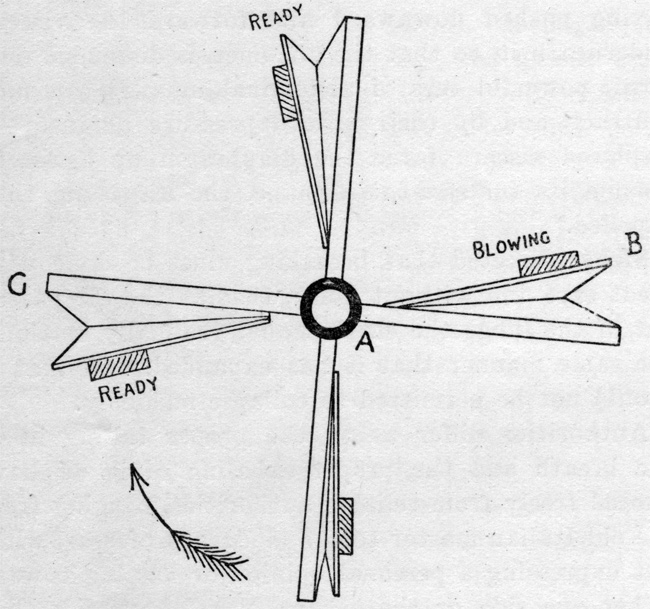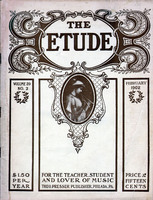The mechanical arrangements for supplying organs with the necessary wind have, on the whole, fairly kept pace with the improvements effected in other departments of organ-construction.
Nearly all the old treatises upon the organ state that the first pipe-organ of which there is any record in this country (England) was erected in Winchester Cathedral (circa a.d. 950). This organ, it is averred, possessed only forty “keys,” but needed seventy blowers. Considering that for some centuries after the date named the “keys” were rude beams of timber padded so as to admit of being struck with both fists, and that consequently only one was used at a time, the blowing arrangements must have been singularly defective. But when modern improvement introduced heavier wind-pressure, and especially since wind came to be used expansively (as steam) to move heavy swell-shutters, to draw stops, couplers and composition movement, absolutely new methods of blowing became necessary.
 With a view to obviate the disadvantages inherent to bellows with folds, cases working like gasometers, with elaborate counterpoises, have been tried, but apparently without much success.
With a view to obviate the disadvantages inherent to bellows with folds, cases working like gasometers, with elaborate counterpoises, have been tried, but apparently without much success.
To overcome the friction of feeder actions,—always a prominent cause of wasted power,—numberless contrivances have been introduced, none perhaps more ingenious than the variety known as “centrifugal feeders,” the weight attached to each feeder supplying the force both to drive out the wind and to open the bellows ready for work.
From a glance at the rough diagram illustrating the principle of this discovery, it will be seen if the four bellows are made to revolve on the center, A, that as each successive bellows comes to B the weight will cause it to discharge, and as it comes up toward C the same weight will draw it open. To work such a system of feeders, a heavy fly-wheel is obviously needed.
Of more practical service are the different forms of French double-acting feeders, which undoubtedly bend themselves best to the requirements of high-pressure organs. No absolute rules can be laid down as to the best system of planning organ-bellows and blowing-methods. All depends upon the size of the organ, the wind-pressure, and the special features and circumstances of each particular case.
Human power, as applied by the means of the ordinary bellows-handle, is used under conditions singularly wasteful. If the muscular power of a man is to be fully available, it can only be when pulling horizontally, as in rowing, and then he must have firm back- and foot- rests. But if the resistance in pounds to be overcome is less than the weight of his body, utilizing his weight upon a treadmill action has been over and over again proved to be the method by which a man can exert the most power for the longest time, besides commanding the advantages of perfect steadiness. Whatever be the motive power, and whatever the action, handles, treadmill, or crankshaft, the all-important consideration is to determine the size and shape of the feeders suited to the particular instance.—J. W. Hinton.



